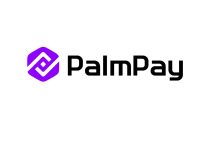How to Close, Delete or Deactivate your Quickcheck Account Easily
Are you considering closing, deleting or deactivating your Quickcheck account? It’s easier than you might think! In this blog post, we’ll explain how to quickly and easily close, delete or deactivate your Quickcheck account. We’ll also provide helpful tips and useful information about managing your account. By the end of this blog post, you’ll have all the information you need to make an informed decision about your Quickcheck account.
Table of Contents
Why You Might Want to close Your Quickcheck Account
If you’re thinking about closing, deleting, or deactivating your Quickcheck account, you’re not alone. There are several reasons why you might want to consider this option:
- Privacy concerns: Closing your Quickcheck account can help protect your personal information and keep it out of the hands of unauthorized users.
- Inactivity: If you’re no longer using Quickcheck and have no plans to use it in the future, closing your account can help declutter your online presence.
- Financial management: Some users find that closing their Quickcheck account helps them better manage their finances by reducing the temptation to take out unnecessary loans.
- Security concerns: If you suspect any unauthorized activity on your Quickcheck account, closing it immediately is a smart move to safeguard your financial information.
The process to close, delete, or deactivate your Quickcheck account is simple. Stay tuned for the next section, where we’ll outline the steps in detail, making it easy for you to take action.
How to Close, Delete or Deactivate your Quickcheck Account Easily
Closing, deleting, or deactivating your Quickcheck account is a simple process that can be completed in just a few steps. Here’s how to do it easily:
- Log in to your Quickcheck account: Start by logging in to your Quickcheck account using your username and password.
- Navigate to account settings: Once you’re logged in, look for the account settings section. This can usually be found in the top right corner of the screen.
- Choose the close, delete, or deactivate option: In the account settings, you will find the option to close, delete, or deactivate your account. Select the option that aligns with your preferences.
- Confirm your decision: Quickcheck will typically ask for confirmation before proceeding with closing, deleting, or deactivating your account. Make sure to read any notifications or prompts carefully and confirm your decision.
- Follow any additional instructions: Depending on the platform, there may be additional steps or instructions to follow to complete the process. Be sure to follow these instructions to ensure that your account is properly closed, deleted, or deactivated.
Remember, once you close, delete, or deactivate your Quickcheck account, your data and information associated with the account will no longer be accessible. Make sure to consider any consequences or implications before taking this step.
What happens to your loan if you close your Quickcheck account?
If you choose to close your Quickcheck account while you still have an outstanding loan, several things can happen to your loan:
- Loan Repayment: You are still responsible for repaying the loan according to the terms and schedule you agreed upon when you initially borrowed the funds. Closing your Quickcheck account does not absolve you of this financial obligation.
- Communication: Quickcheck may attempt to communicate with you through other means to ensure loan repayment. This could include contacting you via email, phone calls, or text messages to remind you of your outstanding debt.
- Late Fees and Penalties: If you fail to make payments on time, Quickcheck may apply late fees and penalties as outlined in your loan agreement. These additional charges can increase the overall cost of the loan.
- Credit Reporting: Failure to repay the loan may result in negative reporting to credit bureaus. This could negatively impact your credit score and make it more challenging to obtain credit in the future.
- Debt Collection: In cases of prolonged non-payment, Quickcheck may employ debt collection agencies or take legal action to recover the outstanding loan amount. This can lead to further financial consequences and legal implications.
It’s crucial to communicate with Quickcheck’s customer support or reach out to them to discuss your situation if you are facing difficulties repaying your loan. They may be able to provide options for loan restructuring or alternative repayment arrangements.
FAQS
What will happen if I don’t pay Okash loan?
If you don’t repay your Okash loan on time, several consequences may occur:
- Late Fees: Okash may charge you additional fees for late repayment, increasing the overall cost of the loan.
- Credit Score Impact: Non-payment or late payment can negatively affect your credit score, making it harder to access credit in the future.
- Collections: Okash may use debt collection methods to recover the loan amount, which can include contacting you directly or involving third-party debt collection agencies.
- Legal Action: In extreme cases of non-repayment, Okash may pursue legal action to recover the debt.
To avoid these issues, it’s crucial to repay your Okash loan on time or contact their customer support if you’re facing difficulties for possible repayment solutions.
What is the email address for QuickCheck?
The email address for QuickCheck’s customer support can vary, and it’s best to check their official website or app for the most up-to-date contact information. Typically, you can find their contact details in the “Help” or “Contact Us” section within the QuickCheck app or on their website.
How much can QuickCheck borrow me for the first time?
The loan amount that QuickCheck can offer you for the first time can vary based on several factors, including your creditworthiness, income, and other financial information. Typically, QuickCheck offers small, short-term loans, and the initial loan amount may be relatively modest. As you build a positive repayment history with QuickCheck, you may become eligible for larger loan amounts in subsequent loan applications.
What are the fake loan apps in Nigeria?
The presence of fake loan apps is a concern in many countries, including Nigeria. These apps often promise quick and easy loans but may engage in fraudulent activities. Some notorious fake loan apps in Nigeria have been reported in the past, but it’s essential to stay updated on potential scams by checking with reliable sources and reading user reviews before using any loan app. Always opt for well-established and reputable lending platforms.
How do I get rid of a fake loan app?
If you’ve inadvertently installed a fake loan app or suspect that you’re dealing with one, here are steps to get rid of it:
- Uninstall the App: Go to your device’s app settings and uninstall the suspicious app.
- Change Passwords: If you created an account on the fake app, change your passwords for that app and any other accounts where you used similar login credentials.
- Check for Unauthorized Transactions: Review your financial statements and transactions to ensure no unauthorized activity occurred.
- Report the App: Report the fake app to app stores like Google Play Store or Apple App Store. This helps prevent others from falling victim to the same scam.
- Alert Authorities: If you believe you’ve been a victim of fraud, report it to the appropriate authorities or law enforcement agencies.
- Educate Yourself: Be cautious when downloading apps and providing personal information. Learn to identify red flags and research app reviews and developer information before installing any new apps.
Preventing the installation of fake loan apps is crucial for your online security and financial well-being. Always verify the legitimacy of an app before using it for financial transactions or sharing personal information.
Conclusion
In closing, closing, deleting, or deactivating your Quickcheck account doesn’t have to be a daunting task. With just a few simple steps, you can easily take control of your online presence and safeguard your personal information. Whether it’s for privacy concerns, financial management, or security reasons, there are many valid reasons why you might choose to close your account.
Remember to carefully consider any consequences or implications before taking this step. And if you have any outstanding loans with Quickcheck, closing your account doesn’t absolve you of your financial obligations. You’ll still need to repay your loans according to the terms of your loan agreement.
If you’re ready to close, delete, or deactivate your Quickcheck account, simply follow the steps outlined in this blog post. By doing so, you’ll be on your way to managing your online presence and protecting your personal information.




